Transforming your home into a harmonious haven is a design challenge many homeowners face. Blending the living room and dining room into a cohesive, multifunctional space can be both practical and visually striking. In this comprehensive guide, we’ll explore a wealth of stylish living room dining room combo ideas to inspire your next home makeover.
Key Takeaways
- Embrace the benefits of open floor plans to create a seamless living and dining experience.
- Utilize smart design strategies to maximize small spaces and make the most of your combined areas.
- Incorporate versatile room dividers to define zones while maintaining an airy, connected feel.
- Leverage area rugs to unify the living and dining zones for a cohesive aesthetic.
- Carefully plan your lighting design to illuminate both functional and aesthetic aspects of the combo.
Embracing Open Floor Plans
In the world of interior design, the open floor plan has become a sought-after trend, blending the living room and dining room into a seamless, harmonious space. This revolutionary approach to space planning offers numerous benefits that appeal to homeowners and design enthusiasts alike.
Benefits of Combined Spaces
The open floor plan creates a sense of spaciousness and airiness, allowing for a more flexible and multifunctional use of the area. By combining the living room and dining room, homeowners can enjoy the freedom to move freely between these zones, fostering a more connected and social atmosphere. This layout also enhances the flow of natural light, creating a brighter and more inviting ambiance throughout the space.
Cohesive Design Approach
Designing a cohesive living room and dining room combo requires a strategic approach. Embracing the open floor plan calls for a cohesive design vision that ties the two areas together seamlessly. This can be achieved through the use of complementary color palettes, consistent furniture styles, and the strategic placement of architectural elements, such as lighting and room dividers.
By adopting a cohesive design approach, homeowners can create a visually appealing and highly functional living space that seamlessly blends the living and dining areas. This harmonious integration not only enhances the overall aesthetic but also promotes a sense of open floor plan and combined spaces that are both practical and visually captivating.
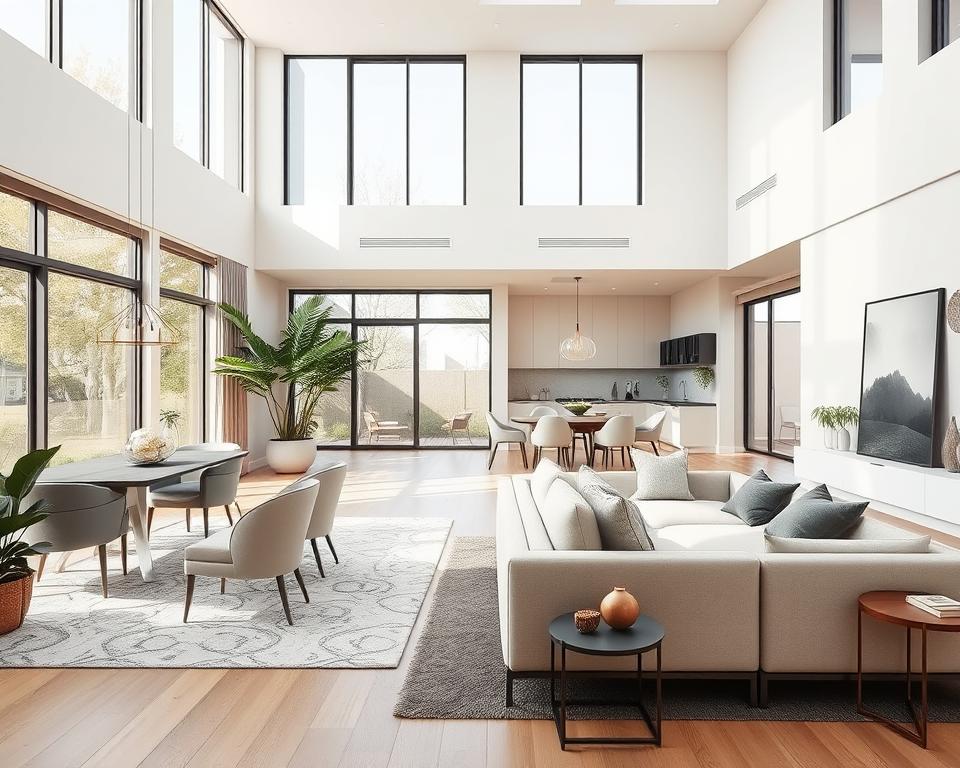
“The key to a successful open floor plan is to approach the design with a cohesive vision, thoughtfully balancing the needs of the living and dining spaces.”
Maximizing Small Spaces
Embracing small space design and multifunctional living is key when blending your living and dining areas in a limited square footage. By implementing strategic layout, furniture placement, and storage solutions, you can create a stylish and functional combo that maximizes every inch of your home.
Start by evaluating your space and identifying areas that can serve dual purposes. Opt for furniture pieces that offer versatility, such as a coffee table with hidden storage or a dining table that can expand to accommodate more guests. Incorporate multifunctional elements that seamlessly transition between living and dining zones.
| Furniture Type | Multifunctional Features |
|---|---|
| Sofa | Built-in chaise lounge or sleeper function |
| Coffee Table | Hidden storage compartments |
| Dining Table | Expandable leaf or trestle base |
| Shelving Unit | Serves as room divider and storage |
Maximize vertical space with strategic shelving and wall-mounted storage solutions. Opt for slim and streamlined furniture pieces that don’t overwhelm the room. By carefully curating your furnishings and layout, you can create a cohesive and visually harmonious living and dining combo in even the most compact of spaces.

“Thoughtful space planning and multifunctional design are key to creating a seamless living and dining combo in a small home.”
Room Dividers: Functional and Stylish
In a combined living room and dining area, strategic use of room dividers can be a game-changer. These versatile design elements not only define distinct zones but also add a touch of visual interest and style to your space.
Versatile Room Divider Options
Room dividers come in a variety of shapes, sizes, and materials, allowing you to find the perfect fit for your area rugs and defining zones. Consider the following options:
- Freestanding screens or panels: These portable dividers can be easily rearranged to suit your needs.
- Curtains or sheer draperies: Suspended from ceiling tracks or rods, these airy dividers create a soft, cozy ambiance.
- Built-in cabinetry or shelving units: Strategically placed storage solutions can double as room dividers, adding both function and style.
- Sliding or pivot doors: These dynamic dividers offer the flexibility to open and close spaces as desired.
Defining Zones with Style
When selecting and positioning your room dividers, focus on creating a visually cohesive and harmonious layout. Coordinate the materials, finishes, and colors of your dividers with the overall design scheme of your combined living and dining area. This will ensure a seamless transition between the two zones, elevating the aesthetic appeal of your space.
“Room dividers are an excellent way to define distinct areas within a combined living and dining room, while still maintaining a sense of openness and flow.”
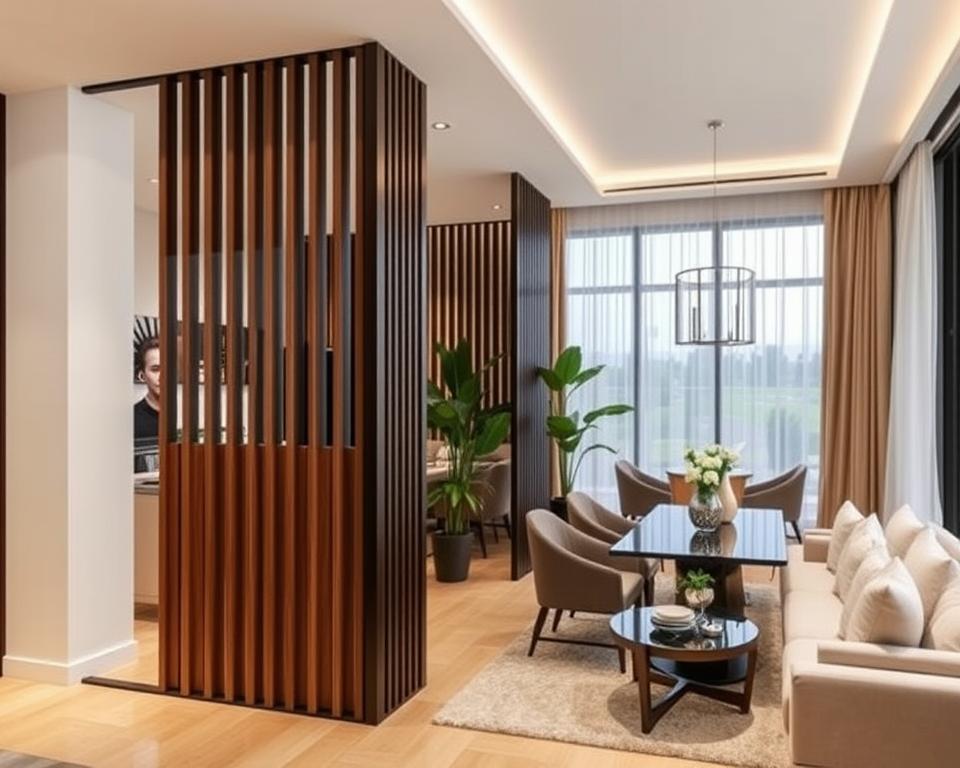
Area Rugs: Unifying the Combo
In a living room dining room combo, the right area rug can be the key to bringing the two distinct zones together seamlessly. By carefully selecting the size, shape, and design of the area rug, you can define and connect the spaces, creating a cohesive and visually appealing environment.
Choosing the Perfect Rug
When it comes to area rugs, size matters. The rug should be large enough to anchor the seating area and visually tie it to the dining zone. As a general rule, the rug should be at least 6-12 inches wider than the dining table on all sides, and should extend under the front legs of the living room furniture.
Shape is another important factor to consider. Rectangular rugs are a classic choice, as they can accommodate both the living and dining areas. However, round or oval rugs can also work well, adding a softer, more organic feel to the space.
Finally, the design of the area rug should complement the overall aesthetic of the combo. Opt for patterns, colors, and textures that tie the living and dining areas together, unifying the combo and creating a seamless flow.
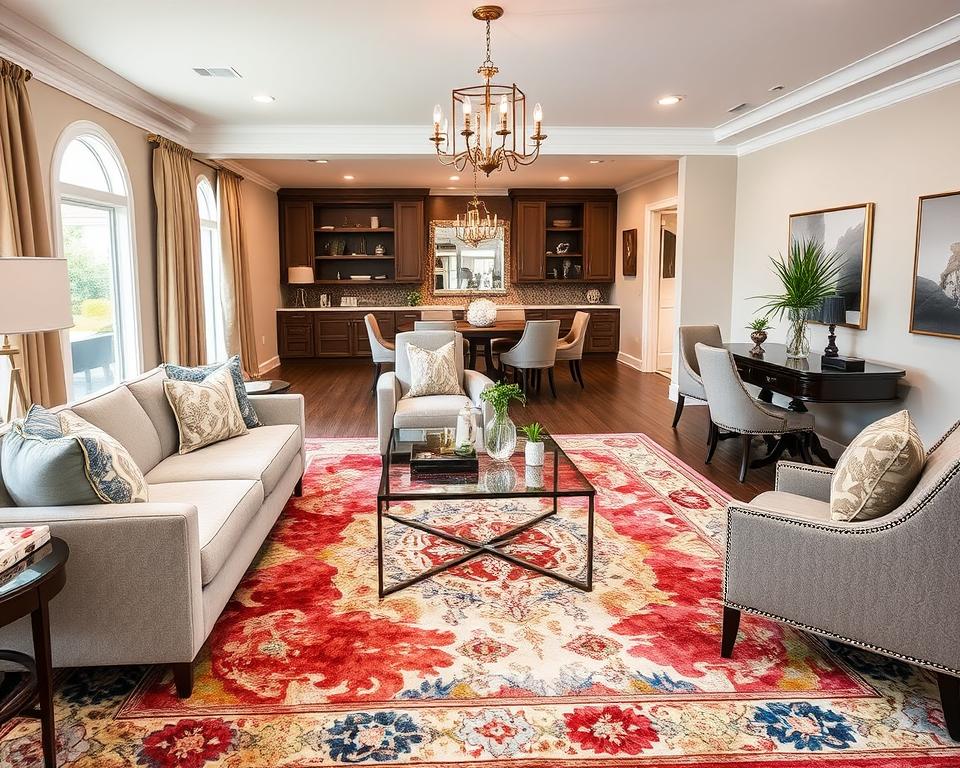
“Choosing the right area rug is like finding the missing piece of a puzzle – it brings the whole space together.”
By carefully considering the size, shape, and design of the area rug, you can transform your living room dining room combo into a harmonious and visually compelling space.
Lighting Design for Combined Spaces
Lighting plays a crucial role in defining the ambiance and functionality of a living room dining room combo. By carefully curating a combination of overhead, task, and accent lighting, you can create a cohesive and well-lit space that seamlessly blends the two distinct areas.
Start with your overhead lighting, which should provide ample illumination for the entire room. Consider installing a stylish pendant or chandelier above the dining table to serve as the focal point and help differentiate the dining zone. Supplement this with recessed or track lighting to evenly distribute light throughout the living room area.
| Lighting Type | Purpose | Recommended Placement |
|---|---|---|
| Overhead Lighting | Provide overall illumination | Above the dining table, recessed or track lighting throughout the space |
| Task Lighting | Illuminate specific work or activity areas | Over the dining table, next to reading chairs, or under kitchen cabinets |
| Accent Lighting | Highlight architectural features, artwork, or other focal points | Directed at specific areas or objects to create visual interest |
Next, incorporate task lighting to illuminate specific work or activity areas, such as over the dining table or next to reading chairs in the living room. This will help define the different zones and ensure that each area is well-lit for its intended purpose.
Finally, use accent lighting to highlight architectural features, artwork, or other focal points within the combined space. Strategically placed floor lamps, wall sconces, or recessed lighting can create a warm and inviting ambiance while visually connecting the living and dining areas.
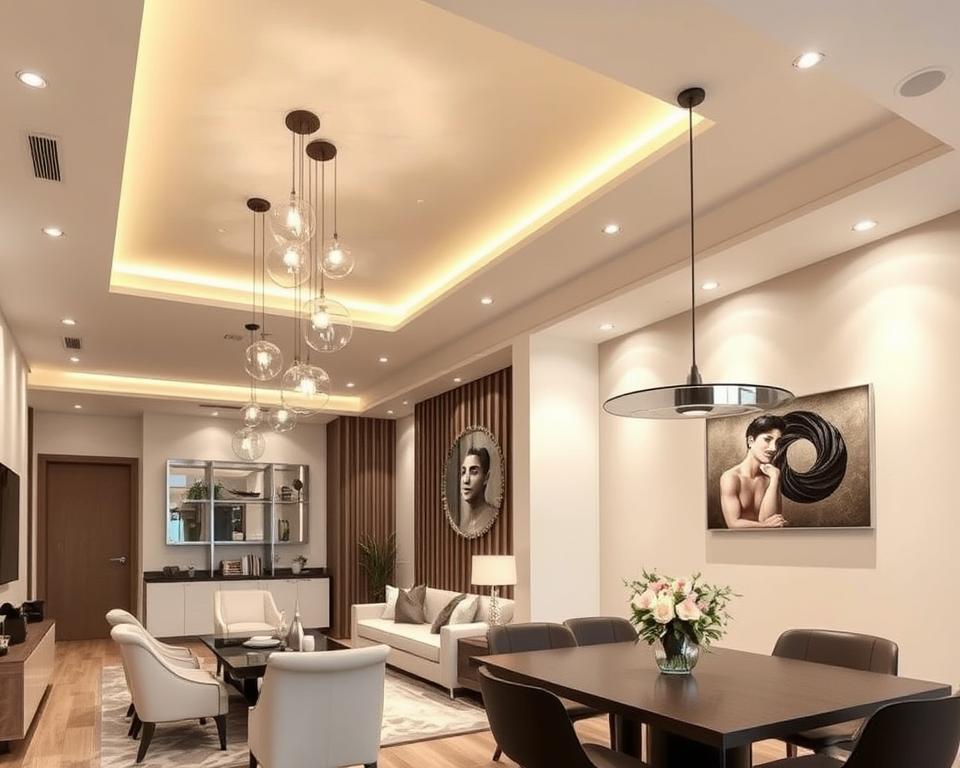
By thoughtfully blending these three lighting types, you can create a lighting design that not only illuminates but also enhances the overall combined spaces and promotes a cohesive flow between the living and dining zones.
Furniture Arrangement Tricks
When it comes to creating a harmonious living room dining room combo, the strategic placement of furniture is key. By zoning the space and incorporating multifunctional pieces, you can achieve a cohesive and practical design.
Zoning with Furniture Placement
Defining the living and dining areas within an open floor plan can be done through thoughtful furniture arrangement. Position key pieces like sofas, armchairs, and dining tables to delineate the boundaries between the two zones. Arrange furniture in a way that encourages natural flow and interaction between the spaces.
Multifunctional Furniture Solutions
Maximize the functionality of your living room dining room combo by choosing versatile furniture pieces. Look for items that can serve dual purposes, such as a coffee table with storage or a console that can be used as a sideboard. Multifunctional furniture helps to create a seamless, uncluttered aesthetic while meeting your practical needs.
| Furniture Arrangement Strategy | Benefits |
|---|---|
| Defining Zones with Furniture Placement | – Establishes distinct living and dining areas – Encourages natural flow between spaces – Creates a cohesive, organized layout |
| Incorporating Multifunctional Furniture | – Maximizes space utilization – Maintains a clutter-free, streamlined appearance – Provides versatile solutions for both living and dining needs |
By mastering furniture arrangement and zoning techniques, along with introducing multifunctional pieces, you can transform your living room dining room combo into a harmonious and practical space that meets all your needs.

Color Schemes for Cohesive Combos
Choosing a cohesive color scheme is essential for seamlessly blending the living and dining spaces. By exploring complementary color schemes and complementary color palettes, you can create a harmonious and visually appealing combination that reflects your personal style.
Complementary Color Palettes
Complementary colors are those that sit opposite each other on the color wheel, such as blue and orange, or red and green. These contrasting hues can create a bold and striking look when used together. To achieve a cohesive combo, consider incorporating various shades and tints of complementary colors throughout the living and dining areas.
| Complementary Color Palette | Mood and Atmosphere |
|---|---|
| Blue and Orange | Vibrant and energetic |
| Red and Green | Classic and timeless |
| Purple and Yellow | Sophisticated and elegant |
Experiment with different proportions of the complementary colors, ensuring that one shade doesn’t dominate the other. This will create a harmonious and visually engaging living and dining room combo.

“Color is a power which directly influences the soul.”
– Wassily Kandinsky
Remember, the key to a successful color scheme for your living room dining room combo is finding the right balance between contrasting and complementary hues. With a little creativity and experimentation, you can craft a space that is both visually striking and perfectly cohesive.
Texture and Pattern Play
When designing a combined living room and dining room space, incorporating a variety of textures and patterns can elevate the visual interest and create a cozy, inviting atmosphere. By layering different materials, fabrics, and design elements, you can add depth and dimension to your multipurpose area, making it both stylish and comfortable.
Texture can be introduced through a range of elements, such as:
- Plush velvet or chenille upholstery on sofas and armchairs
- Woven rattan or bamboo accents, like a coffee table or side chairs
- Knitted or chunky-woven throws and pillows
- Smooth, polished wood surfaces on dining tables and sideboards
- Rough-hewn stone or brick walls
By combining various textures, you can create a visually engaging and tactile experience that encourages guests to interact with the space.
Patterns can also play a significant role in defining the character of a combined living room and dining room. From bold, geometric designs to delicate floral motifs, the strategic use of patterns can add visual rhythm and personality to the area. Consider incorporating patterned textiles, such as curtains, area rugs, or accent pillows, to anchor the design and tie the two zones together. 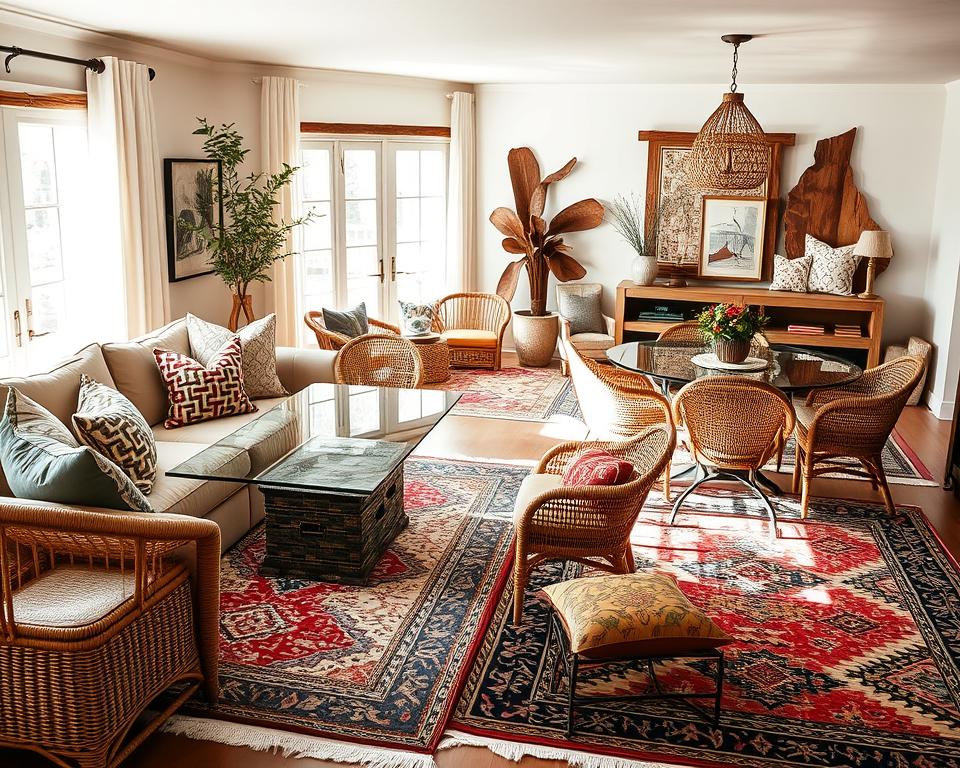
“Texture and pattern are the spice of design. They add depth, dimension, and visual interest to a space.”
Ultimately, by thoughtfully blending texture and pattern in your combined spaces, you can create a harmonious and visually captivating living room-dining room combination that reflects your personal style and creates a welcoming atmosphere.
Living Room Dining Room Combo Inspirations
Blending the living and dining areas can create a harmonious and visually appealing space in your home. Explore these inspiring living room dining room combo ideas to ignite your creativity and transform your combined living and dining areas into a stunning and functional oasis.
For a modern and minimalist aesthetic, consider a sleek, open-concept design with clean lines and a neutral color palette. Incorporate reflective surfaces, such as a glass or marble dining table, to amplify the sense of space and light.
If you’re drawn to a cozy and eclectic vibe, layer various textures and patterns throughout the combo. Mix rustic wood elements with plush, velvet seating, and accentuate the space with distinctive, vintage-inspired lighting fixtures.
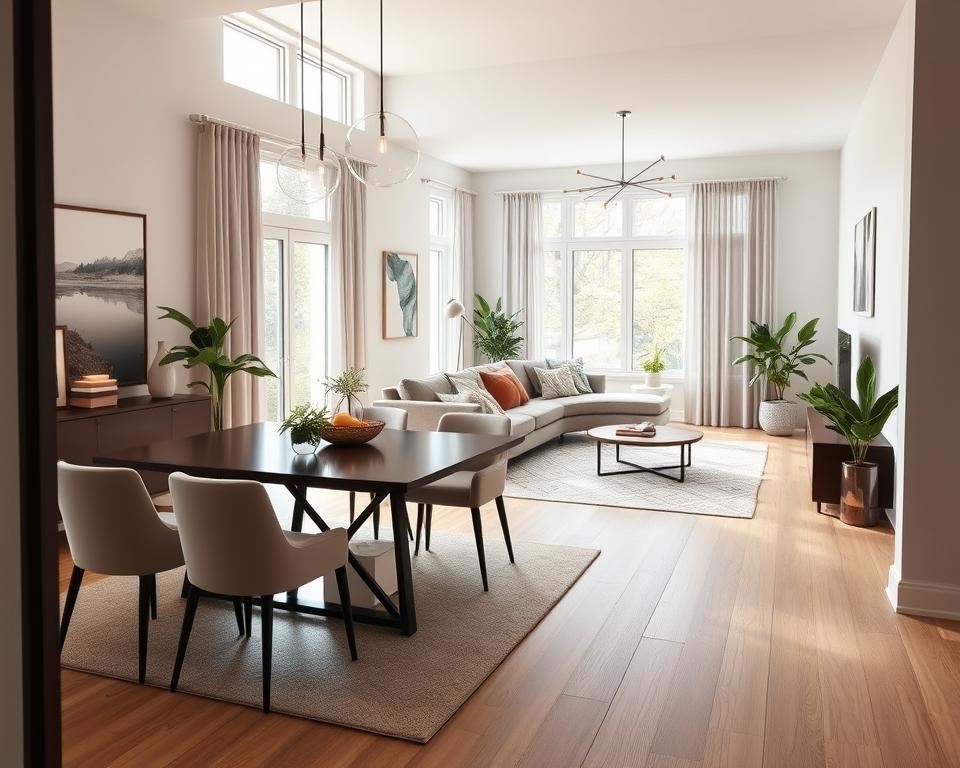
For a harmonious blend of styles, opt for a transitional design that seamlessly merges traditional and contemporary elements. Pair a formal dining set with a casual, L-shaped sectional sofa, and tie the room together with a large, patterned area rug.
Regardless of your personal style, the key to creating a successful living room dining room combo is to find a cohesive design approach that balances functionality and aesthetic appeal. Take inspiration from these captivating ideas to craft a space that reflects your unique taste and lifestyle.
| Living Room Dining Room Combo Inspiration | Key Design Elements |
|---|---|
| Modern and Minimalist |
|
| Cozy and Eclectic |
|
| Transitional |
|
“The key to a successful living room dining room combo is finding a cohesive design approach that balances functionality and aesthetic appeal.”
Space-Saving Ideas for Combos
When blending your living and dining areas, it’s crucial to maximize every square inch. Discover practical space-saving ideas, including multifunctional storage solutions, to create a clutter-free and efficient combo space.
Multifunctional Storage Solutions
Investing in versatile furniture can help you make the most of your combined living and dining room. Consider pieces that serve dual purposes, such as ottomans with hidden storage or a coffee table with built-in shelves. These multifunctional storage options allow you to keep your space organized without sacrificing style.
Another clever idea is to utilize wall-mounted shelves and cabinets. These space-saving solutions can help you store items vertically, freeing up valuable floor space. Opt for sleek, minimalist designs that seamlessly blend with your overall aesthetic.
| Space-Saving Furniture | Benefits |
|---|---|
| Ottomans with hidden storage | Provides extra seating and concealed storage |
| Coffee tables with built-in shelves | Combines a focal point with practical storage |
| Wall-mounted shelves and cabinets | Maximizes vertical space, keeping the floor clear |
By incorporating these space-saving ideas and multifunctional storage solutions, you can create a harmonious and efficient living room dining room combo that meets all your needs.
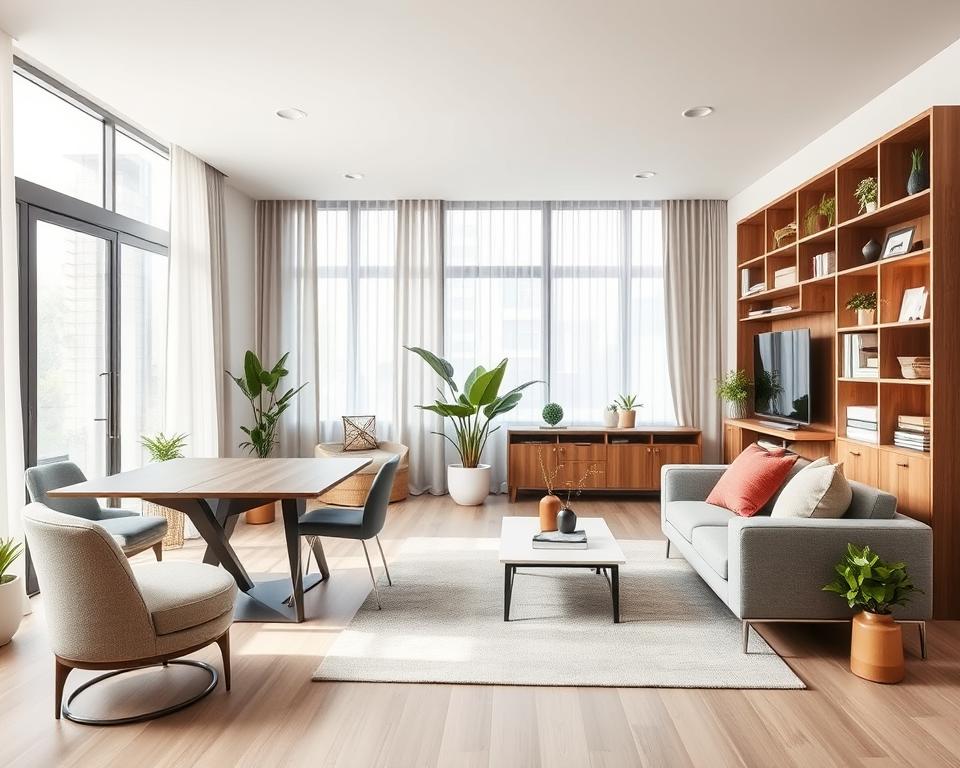
Blending Styles for Unique Combos
Living room dining room combos offer an exciting opportunity to blend different design styles and create a truly one-of-a-kind space that reflects your personal taste. Whether you’re drawn to the timeless elegance of traditional decor or the clean lines of contemporary design, you can seamlessly incorporate a mix of aesthetic elements to craft a unique and captivating combo.
Embracing the art of blending styles allows you to play with contrasts and create visually striking juxtapositions. Pair a sleek, modern dining table with ornate, vintage-inspired chairs, or complement a rustic, farmhouse-style sideboard with a contemporary light fixture. The key is to find a harmonious balance that celebrates the unique combos of your preferred styles.
- Experiment with a mix of old and new, pairing antique pieces with modern accents.
- Juxtapose industrial elements, such as exposed brick or metal, with plush, cozy textiles.
- Blend natural materials, like wood and stone, with clean, minimalist furnishings.
The beauty of this approach lies in its ability to reflect your individuality and create a space that is truly one-of-a-kind. By embracing the art of blending styles, you can transform your living room dining room combo into a harmonious and visually captivating haven that showcases your unique aesthetic.
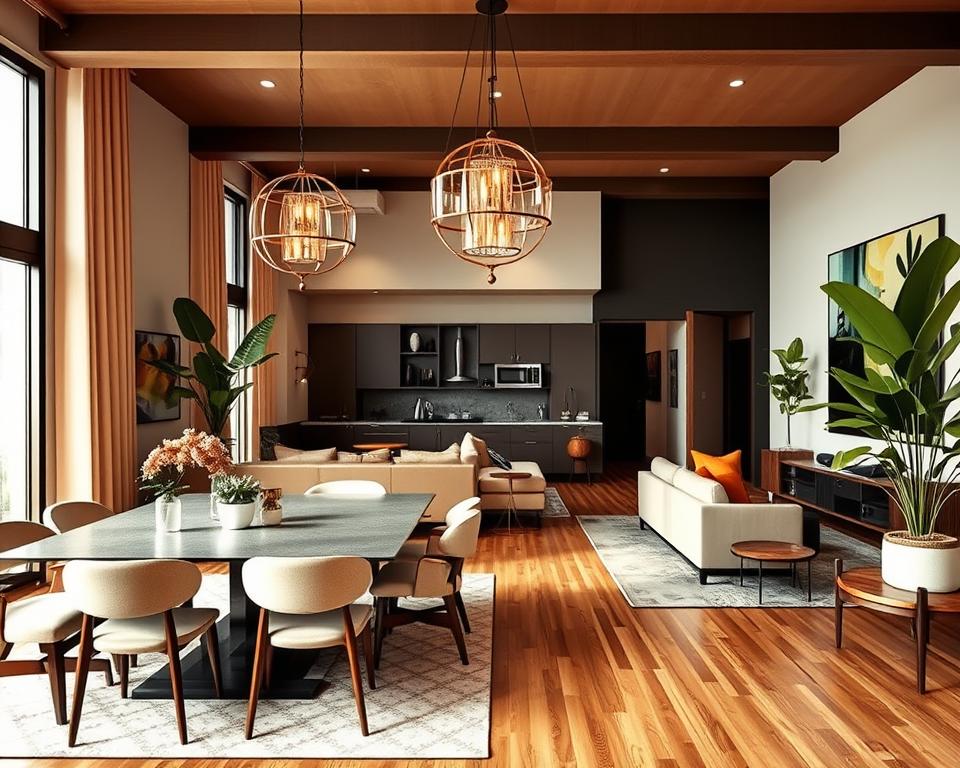
| Style Blend | Design Elements | Cohesive Approach |
|---|---|---|
| Traditional and Modern | – Ornate, vintage-inspired furniture – Clean, contemporary light fixtures – Plush, textured fabrics |
– Emphasize contrasts – Find common threads (e.g., color, material) – Incorporate transitional pieces |
| Industrial and Rustic | – Exposed brick or metal elements – Weathered wood surfaces – Cozy, natural textiles |
– Embrace the juxtaposition – Unify with complementary finishes – Balance hard and soft textures |
| Minimalist and Eclectic | – Clean, streamlined furniture – Unique, statement-making accessories – Natural materials and textures |
– Maintain a cohesive color palette – Incorporate functional, multi-purpose pieces – Create visual interest through varied elements |
By thoughtfully blending styles and embracing unique combos, you can transform your living room dining room into a harmonious and captivating space that reflects your personal style and aesthetic preferences.
Conclusion
Embracing the harmony of a living room dining room combo can be a transformative design decision, allowing you to create a versatile, functional, and visually captivating multipurpose space. By implementing the strategies and ideas discussed throughout this article, you can unlock the full potential of your living room dining room combo and enjoy a beautiful, cohesive, and personalized space that truly reflects your lifestyle.
Blending the living and dining areas can foster a natural flow, promote efficient utilization of space, and elevate the overall aesthetic of your home. From leveraging open floor plans and strategic room dividers to selecting the perfect area rugs and incorporating cohesive lighting and color schemes, the possibilities for crafting an exceptional living room dining room combo are endless.
Ultimately, the living room dining room combo represents a design solution that allows you to maximize your available square footage, create a harmonious and visually striking environment, and tailor the space to your unique preferences. By embracing the strategies outlined in this article, you can embark on a transformative journey to craft a living room dining room combo that not only meets your practical needs but also elevates your everyday living experience.
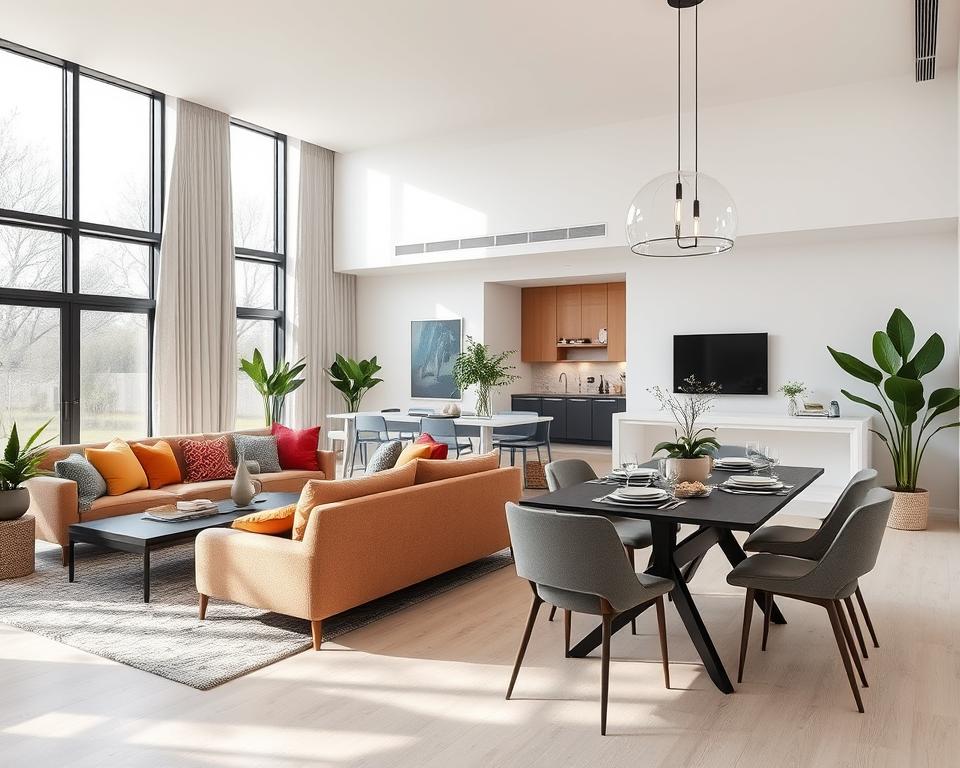
Leave a Reply